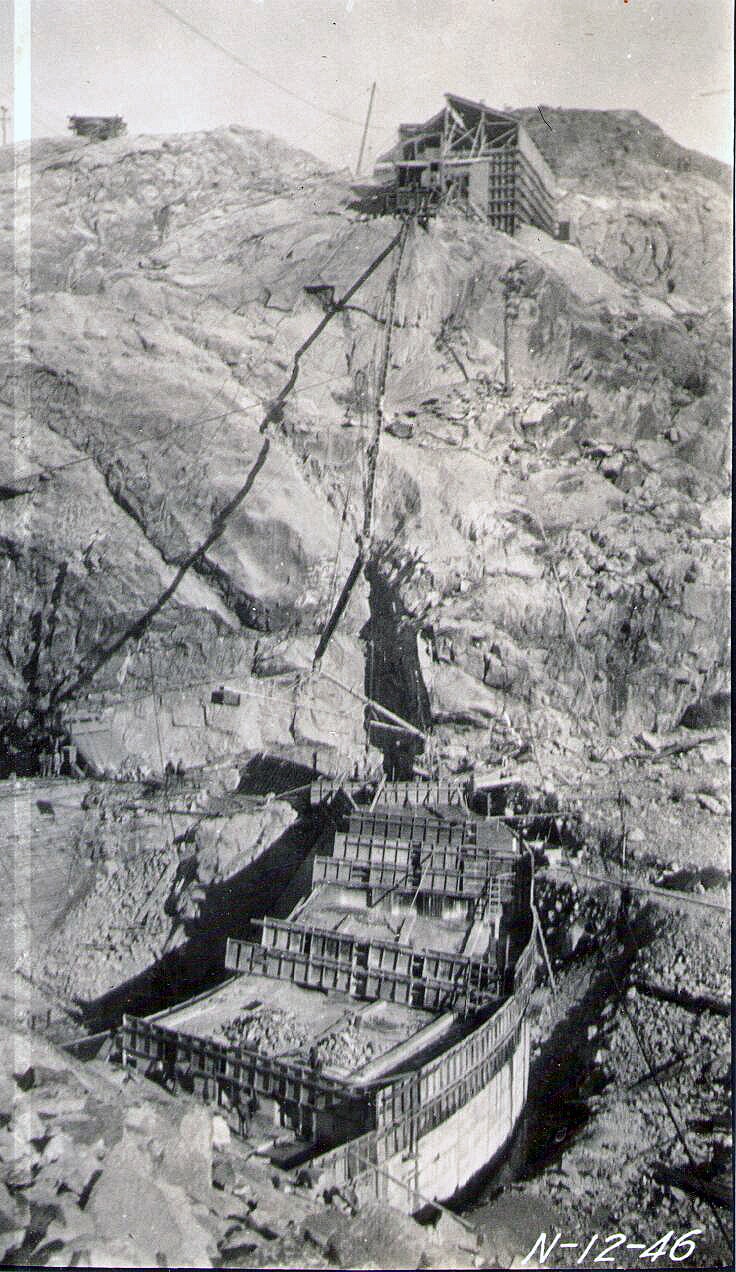Bringing greener pastures: how the Sierra's waters shaped Nevada County’s future
NID celebrates 104 years of operation
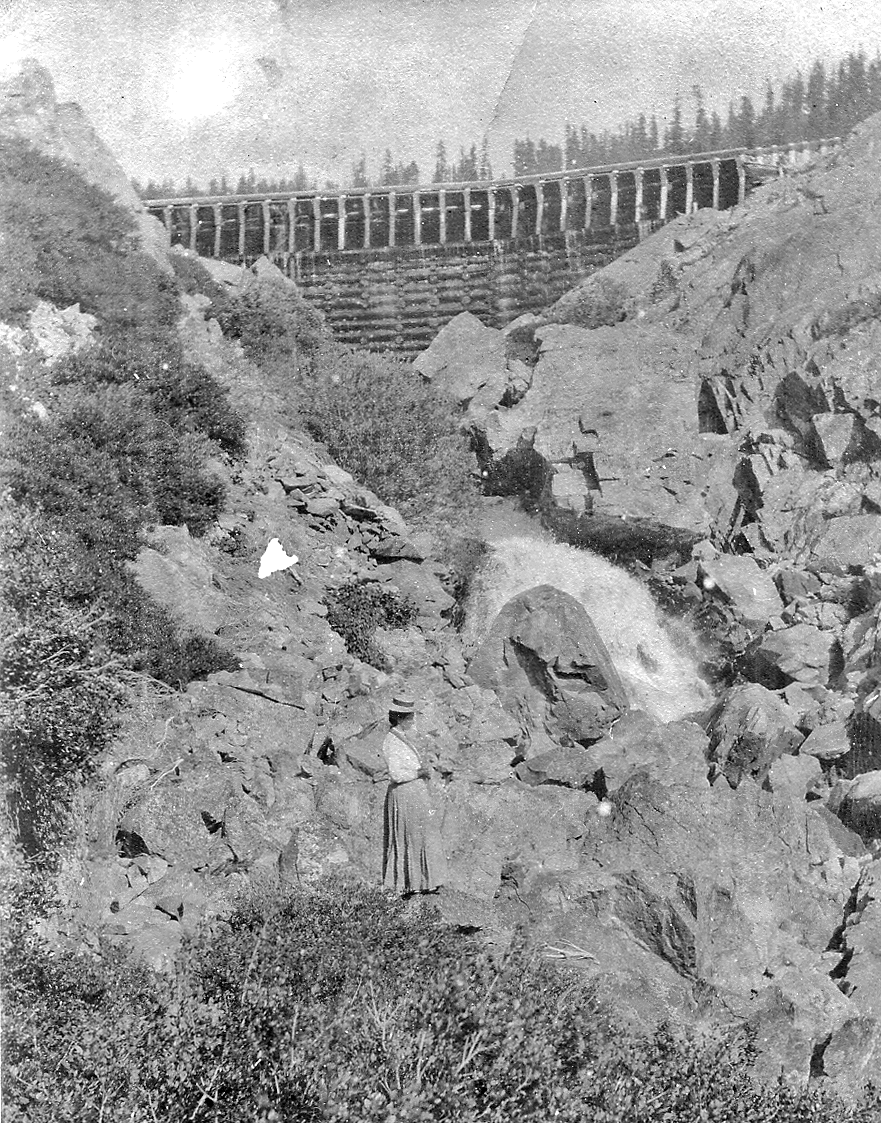
On August 5, 1921, voters in Nevada County made a decision that would transform the future of their communities. With a vote of 636 to 163, residents approved the formation of the Nevada Irrigation District (NID). It was a pivotal moment that would bring Sierra Nevada water to the parched farms and ranches of the foothills.
To some, it may have seemed like just another election. But for the families working the land, it marked the dawn of a new era—one not driven by gold or timber, but by the life-giving promise of water.
The formation of NID brought more than just infrastructure. It sparked growth in the local ag industry, boosted the region’s economy, and launched a lasting legacy of resilience and resourcefulness. It was the beginning of a forward-looking movement that helped create the vibrant communities we cherish today.
A community on the brink of change
In 1920, Nevada County was home to around 11,000 people, and was in transition. The Gold Rush era had passed, and the region was shifting toward a more diversified economy. While mining and timber remained economic pillars, agriculture had taken firm root. Nearly 3,200 farms and ranches dotted the landscape.
Farmers cultivated apples, pears, peaches, wine grapes, hay, and small grains. Sheep and cattle grazed the hillsides. But water, especially during the hot summer months, was in short supply. Ranching, in particular, was heavily constrained by the lack of irrigation.
For years, as lower pastures browned under the summer sun, ranchers were forced to drive their herds high into the Sierra to find green grass and reliable water. The trek could span more than 50 miles and take up to a week, depending on the route. The journey was grueling, but there was no choice; without those alpine meadows, ranchers’ livestock wouldn’t survive.
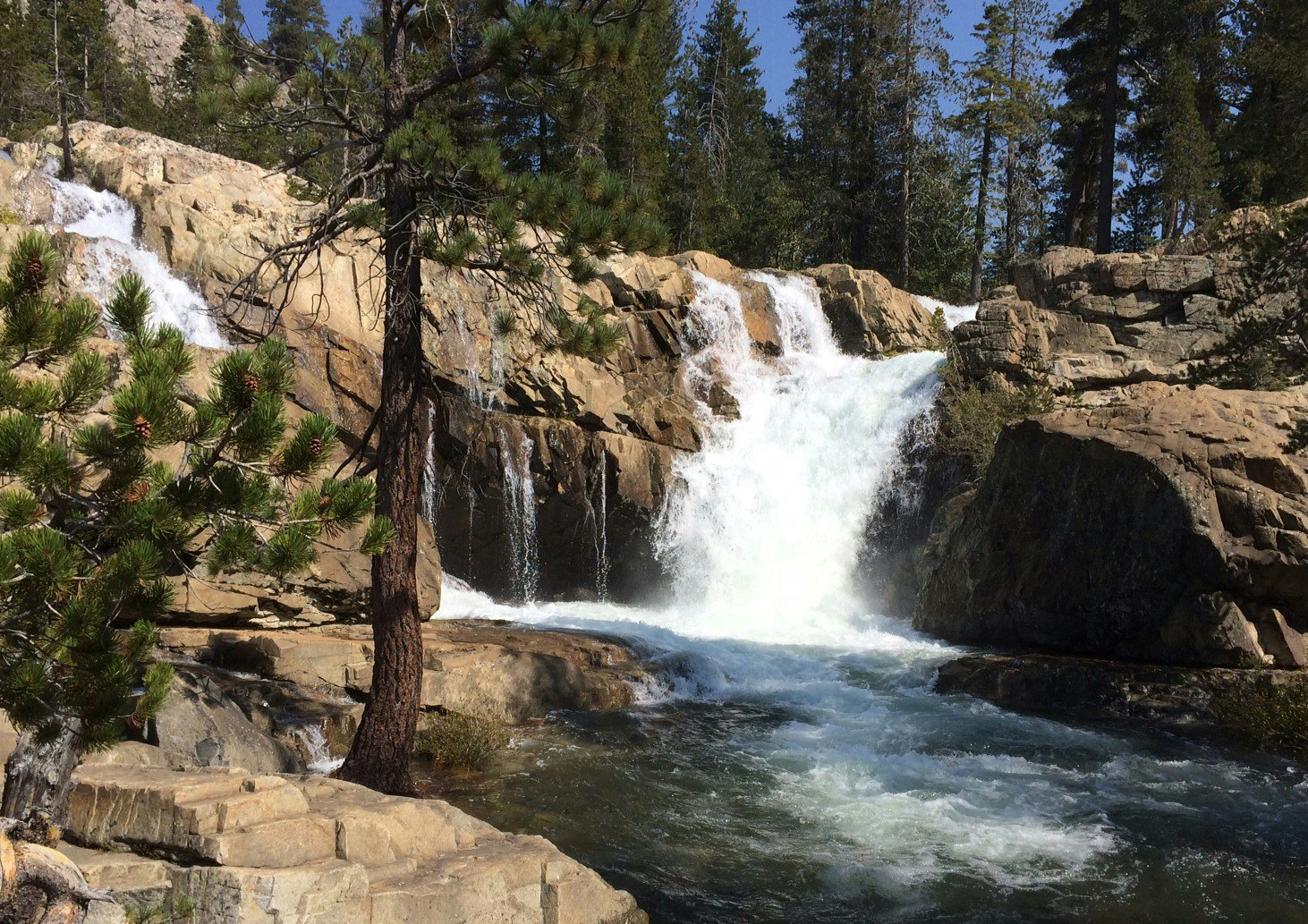
Among those who made this trek were Munson Bernard “Bert” Church and his wife, Kate. Grazing their cattle near what is now Jackson Meadows Reservoir, they knew firsthand the challenges of foothill ranching. But more importantly, they could see the potential.
High in the Sierra, they watched cold, clear streams tumble unused through granite ravines, while back home, crops and pastures thirsted. It was there, under the mountain sky, that a dream took shape.
According to an account from NID’s 35th anniversary Founders Day Picnic in 1956: “Nearly 49 years ago, Kate Church, astride her horse high on a mountaintop, looked upon rushing, tumbling Sierran streams far below... This day, she saw the wasted waters as if for the first time. Her mind envisioned a great irrigation system transporting life-giving water to dry, but fertile acres, bringing growth and prosperity.”
From vision to mission
That night, by the glow of a dying campfire, Kate and Bert made plans. Back home, they shared their dream with others -- neighbors, ranchers, local business leaders -- and slowly, support grew. Eventually, their vision became a ballot measure. And in the summer of 1921, the people voted overwhelmingly in favor of forming a local irrigation district that would serve Nevada County’s needs.
A legacy provides the way forward
The formation of NID was only the beginning. The next challenge was turning the mandate into a functioning water delivery system.
Fortunately, the past offered a path forward. Left behind by 19th-century gold miners was a vast, if aging, network of flumes, ditches, and reservoirs originally built to fuel hydraulic mining.
By the 1920s, much of this infrastructure was idle, but the water rights and routes remained.
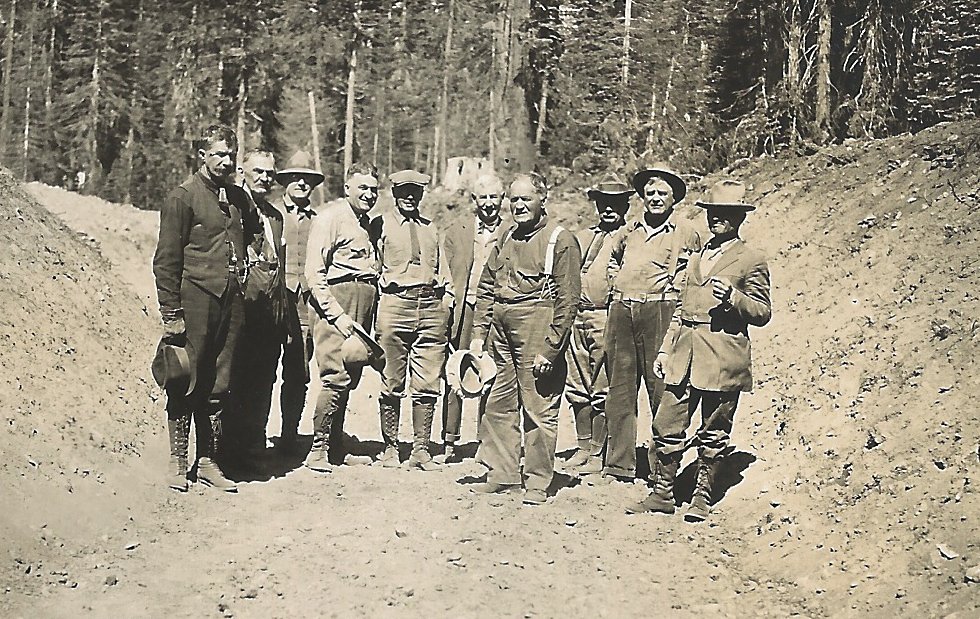
In 1922, NID hired Engineer Fred Tibbetts to map out the region’s high-elevation water sources and determine how best to harness them. His study identified lakes such as Bowman, French, Sawmill, and Faucherie, nestled between 5,400 and 8,500 feet above sea level. These lakes could feed a gravity-powered system capable of delivering water to the dry foothills.
With $7.25 million in voter-approved bonds, NID got to work. The District acquired and repurposed historic infrastructure, like the Bowman Dam that was originally constructed in 1872. The District launched new construction projects, including the Milton Diversion Dam, the Milton-Bowman Tunnel, and the Bowman-Spaulding Canal. These efforts connected mountain sources to the farms and ranches that needed them most.
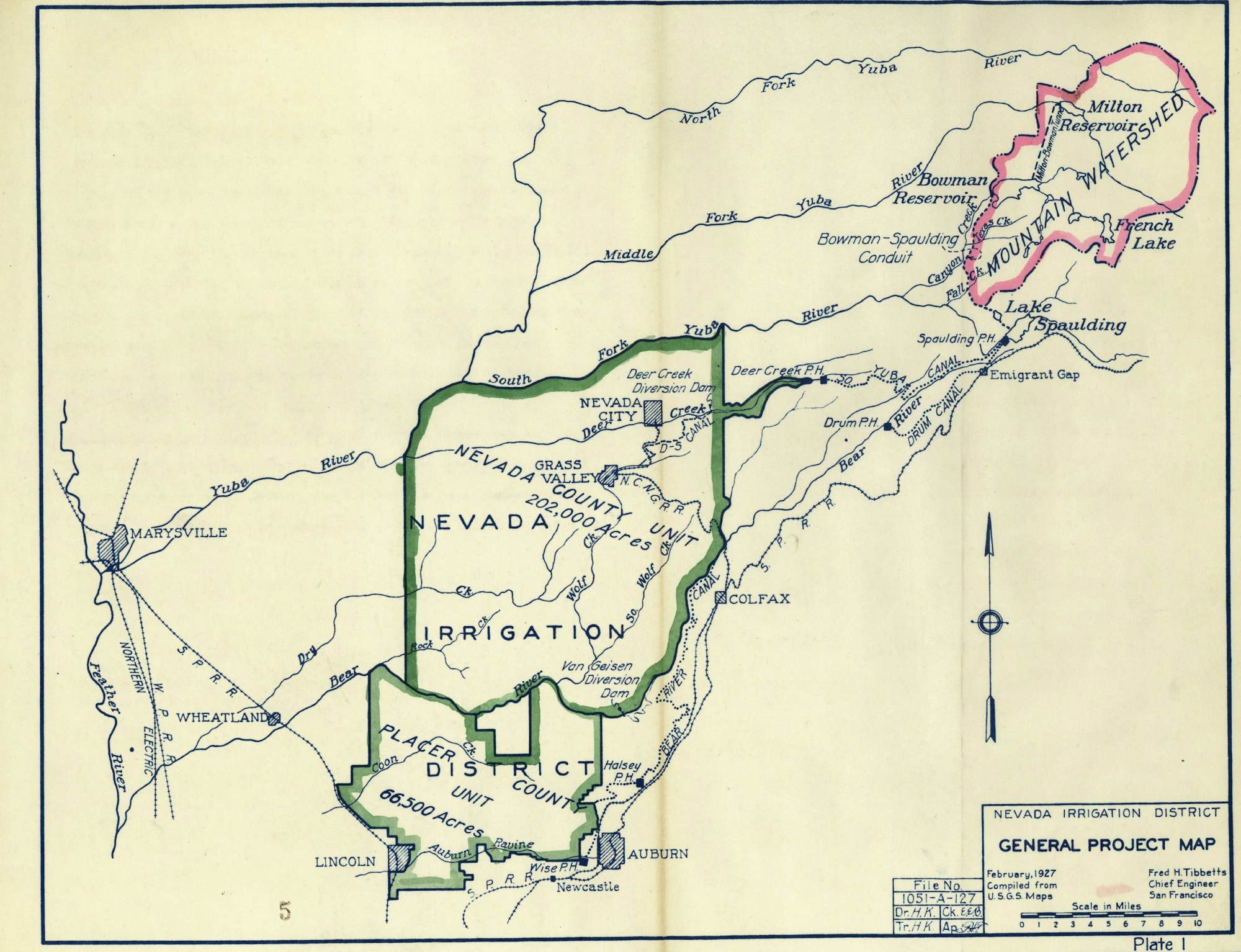
Water flows, and so does progress
By 1927, just six years after its founding, NID had made the seemingly impossible real. Water was flowing from snow-fed Sierra lakes through a restored and expanded network, irrigating the parched lands of the foothills. At a cost of just ten cents a day for irrigation service, families could now rely on a steady supply of water not just in the rainy season, but year-round.
Crops flourished. Fields turned green. Livestock remained closer to home. The land, once scarred by mining, began to thrive, this time through cultivation and not extraction.
At its formation, NID included 202,000 acres in Nevada County. Five years later, in 1926, residents of Placer County chose to join the District, and another 66,500 acres were added.
A dream that endures
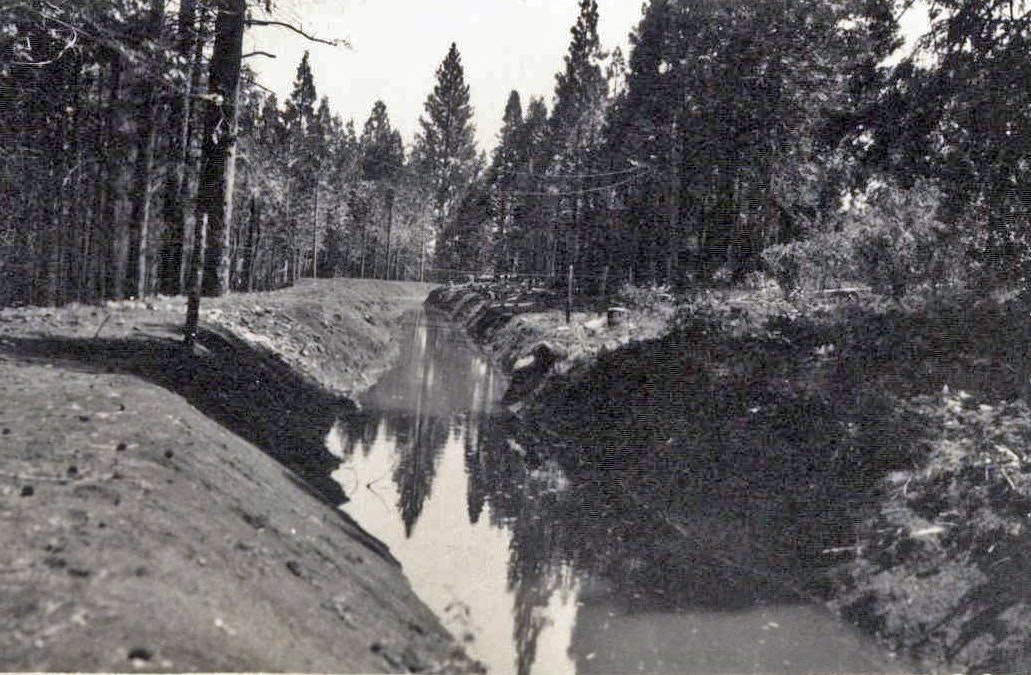
Today, some 104 years later, NID includes more than 287,000 acres, and many of the canals, ditches, and reservoirs first built by miners -- and later restored and expanded by the District --remain in use. The system has grown, but its purpose remains grounded in that same vision shared by Bert and Kate Church: to deliver the Sierra’s bounty to the communities that depend on it.
The Church’s vision, born on a summer night in the high country, lives on in every pasture watered, every orchard grown, and every glass filled. In the end, the greatest treasure left behind by the Gold Rush wasn’t the gold at all; it was the water.
Read more about NID’s history: download for free the District’s history book “Delivering Water for Life.” Click here.
Glimpse into the past of the reconstruction of the Bowman Dam in 1926 (from “Delivering Water for Life”):
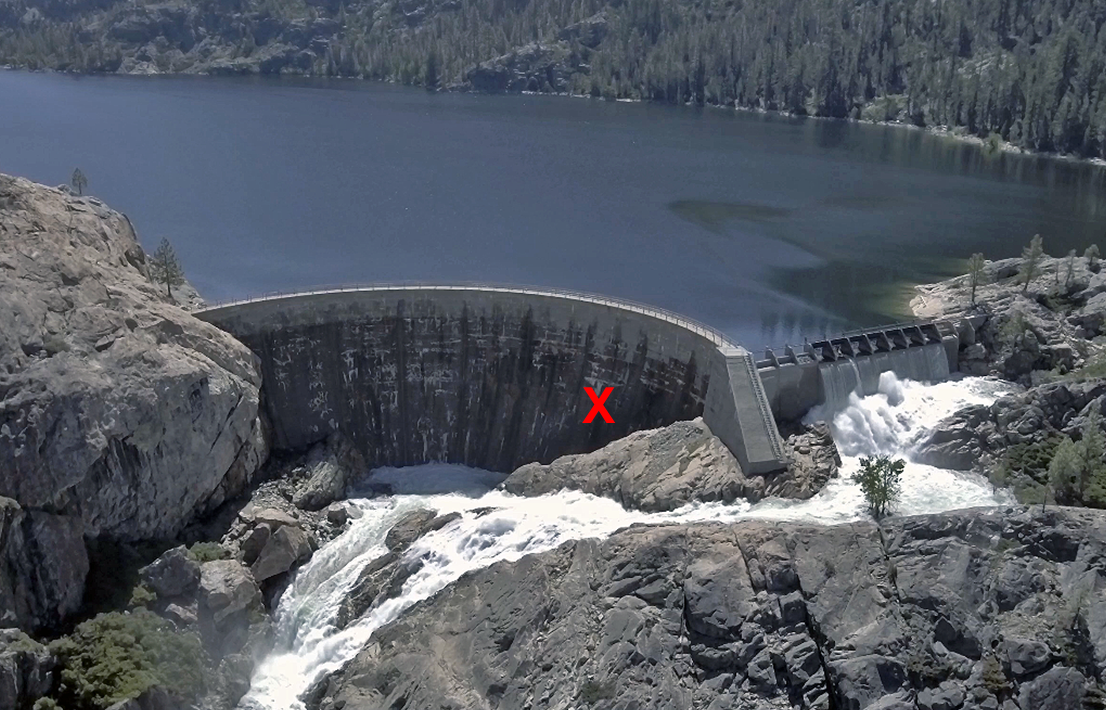

The original Bowman Dam was built on Canyon Creek from 1872-1876 to supply hydraulic gold mines on the San Juan Ridge. This included the North Bloomfield hydraulic mines and Malakoff Diggins.
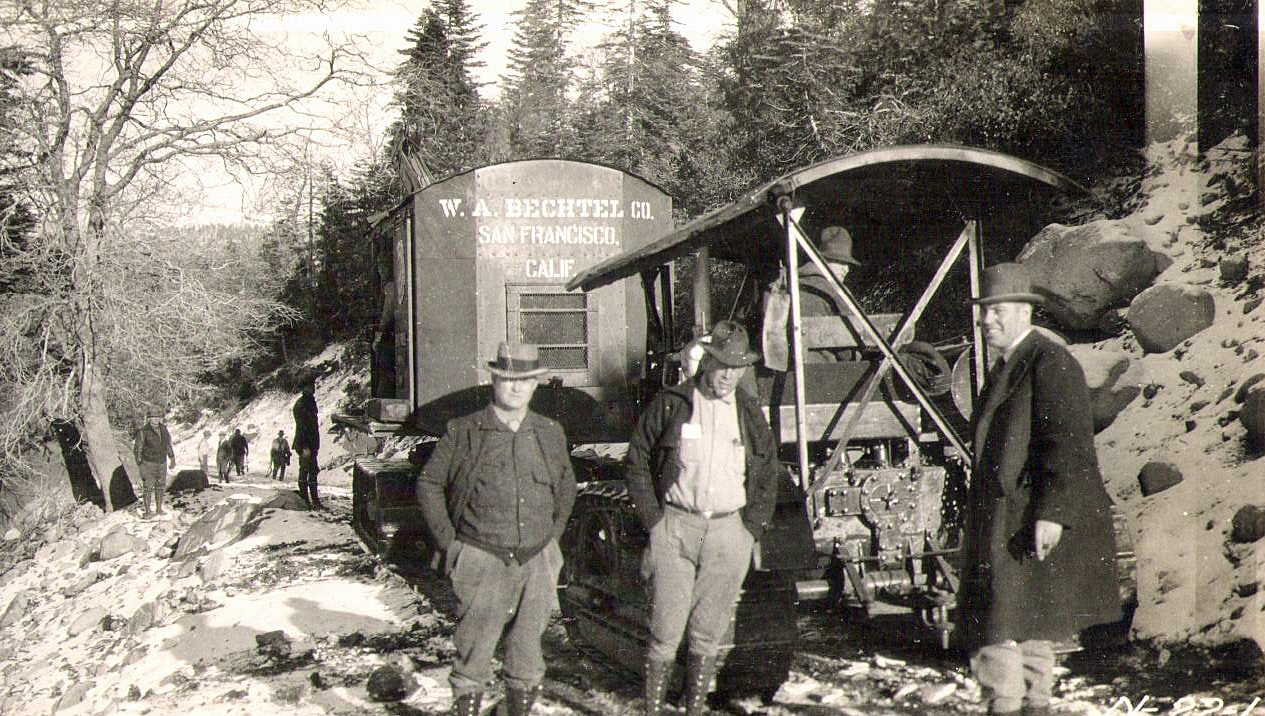
NID hired W.A. Bechtel Company in 1926 to reconstruct the Bowman Dam as the District’s first milestone project. Interestingly, after the Bowman project, Bechtel went on to help build the Hoover Dam in the 1930s.
The original Bowman Dam was built on Canyon Creek from 1872-1876 to supply hydraulic gold mines on the San Juan Ridge. This included the North Bloomfield hydraulic mines and Malakoff Diggins.
The Bowman construction site was so remote, with snowpack lasting nearly six months out of a year, that Bechtel needed to establish a camp complete with a hospital, a hundred head of cattle and a slaughterhouse and storage facilities to sustain the crew for the winter.
The rebuilt and enlarged Bowman Dam was dedicated by Kate Church on June 29, 1927.
